Japanese announcement of the attack at Pearl Harbor, 1941
In January 1941, Admiral Isoroku Yamamoto began developing a plan to attack the American base in Pearl Harbor, Hawaii. For eleven months, the Japanese continued to refine their plans while at the same time working diplomatically to relieve tensions with the United States. On November 26, 1941, the main body of the attack force began moving toward Hawaii.
![[Japanese announcement of the attack at Pearl Harbor], Japan, 1941. (The Gilder Lehrman Institute of American History, GLC09552.01 p1)](/sites/default/files/GLC09552.01.jpg) Shortly before 8 a.m. on Sunday, December 7, 1941, Japan launched a surprise attack against US armed forces in Hawaii. Japanese pilots targeted Army, Navy, and Marine airfields, and then naval ships at Pearl Harbor, with the aim of devastating the entire US Pacific fleet. The two-hour attack left 2,403 Americans dead and 1,178 injured, and was followed by a formal declaration of war against the United States. On December 8, after a nearly unanimous vote by Congress, the US formally declared war on Japan.
Shortly before 8 a.m. on Sunday, December 7, 1941, Japan launched a surprise attack against US armed forces in Hawaii. Japanese pilots targeted Army, Navy, and Marine airfields, and then naval ships at Pearl Harbor, with the aim of devastating the entire US Pacific fleet. The two-hour attack left 2,403 Americans dead and 1,178 injured, and was followed by a formal declaration of war against the United States. On December 8, after a nearly unanimous vote by Congress, the US formally declared war on Japan.
In this printed announcement, the Japanese government provides a detailed account of its victory over the Americans at Pearl Harbor and the British in Malaya and Hong Kong. In addition to providing a detailed account of the battles, it also served “as a memento of the great work being done by this incomparable Empire of ours, and also as food for thought about the many trials that have yet to be overcome.” The first page includes illustrations made from photographs taken by Japanese pilots to document the damage.
Excerpt
What an uproar! Japan’s Imperial Forces got things off to a quick start with one splendid strike then another in historic surprise attacks on Pearl Harbor, where the bravado of the US Asia fleet met with sudden defeat, and off the Malaya Coast, where the main forces of the British Asia fleet were utterly annihilated. Word has it that Roosevelt and Churchill were shaken up and went pale upon hearing of the defeats. In a third strike, Hong Kong Island, England’s strategic base for its 100-year exploitation of East Asia, fell into ruin in only a matter of ten days. During this time, Churchill was sent reeling, cutting off contact with others and showing up in Washington.
What these two headstrong countries are striving for will only lead them on a downhill path to military defeat. Our barbaric enemies are already cowering in fear in the Pacific, and the fall of Manila shall mark the day of the Philippines’ subjugation and reversion back to Greater East Asia. The enemy power of Singapore, which was—alas—boasting of its impenetrable stronghold before the Imperial Forces penetrated the jungle area of the Malay Peninsula and advanced southward like a raging tide, shall also vanish into nothingness in the midst of this glorious chapter in history.
The military gains of the glorious Imperial Forces are truly great, and the army, navy, and air force should be given our heartfelt gratitude. We should also honor our courageous men who are ready to lay down their lives when charging enemy lines, as well as those who went out to conquer but never returned.
A full translation of the document is available here. The table below shows both the original photographs taken by the Japanese on December 7, 1941, and the engravings featured in this document. Click on the images below to enlarge.
|
Aeriel View of Battleship Row |
|
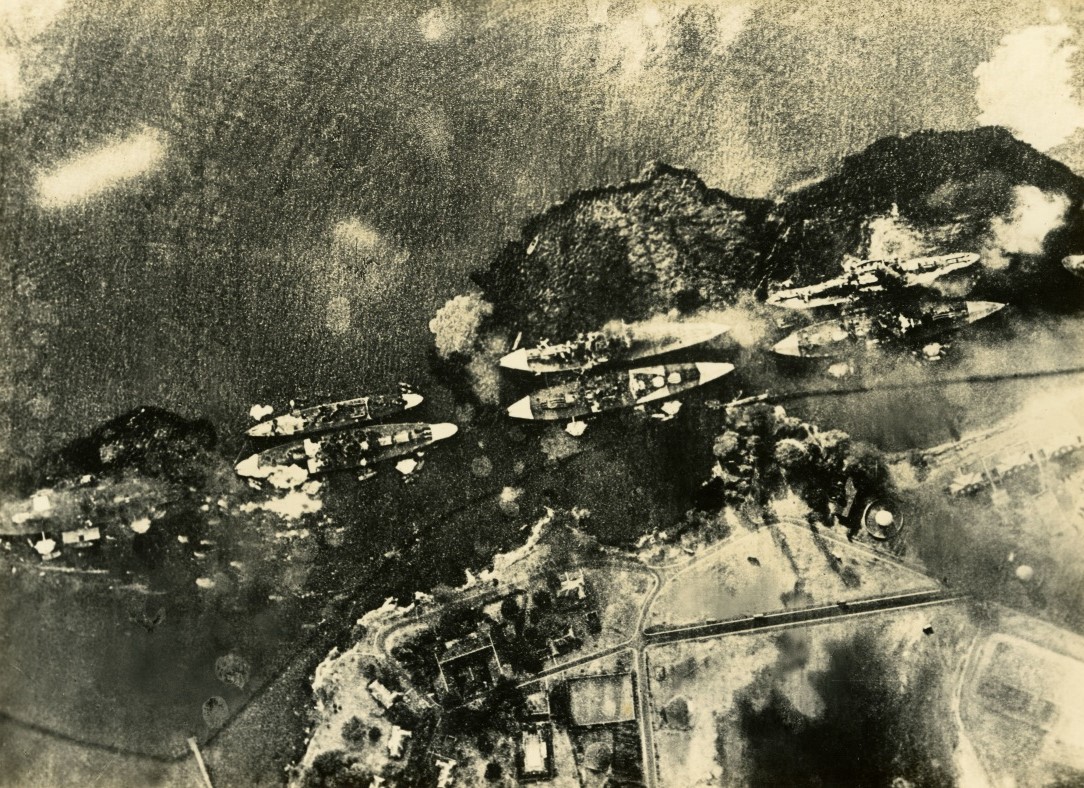 |
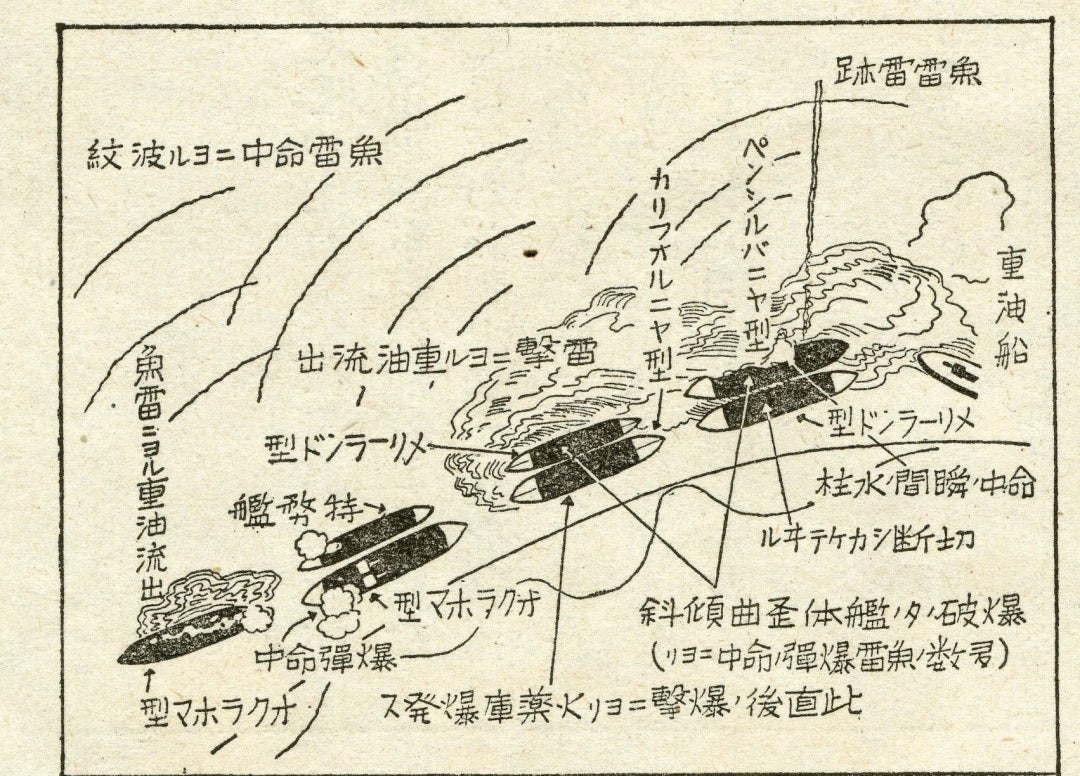 |
|
View of Battleship Row with Hickam Airfield in the Distance |
|
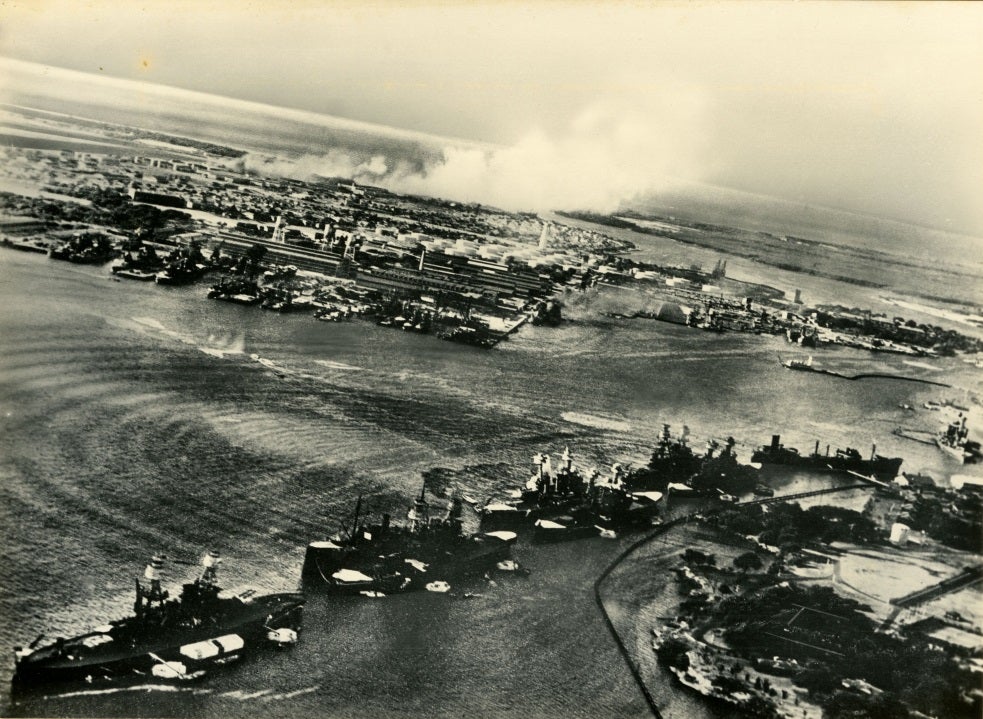 |
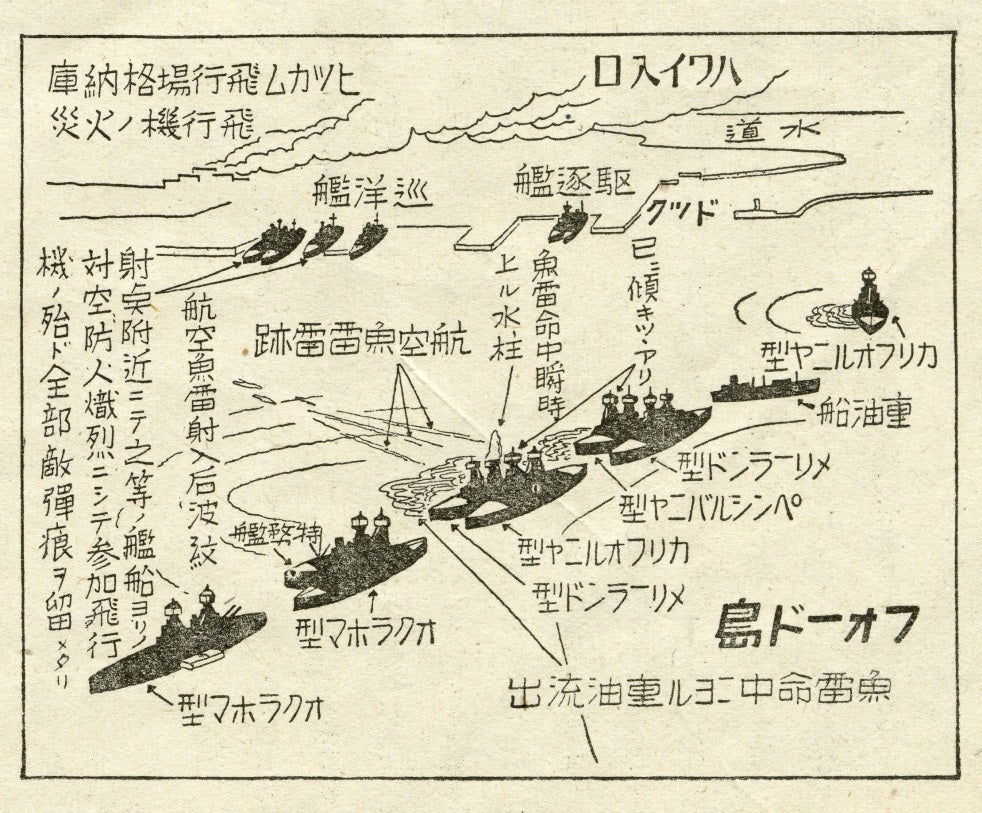 |
|
Naval Air Station Ford Island |
|
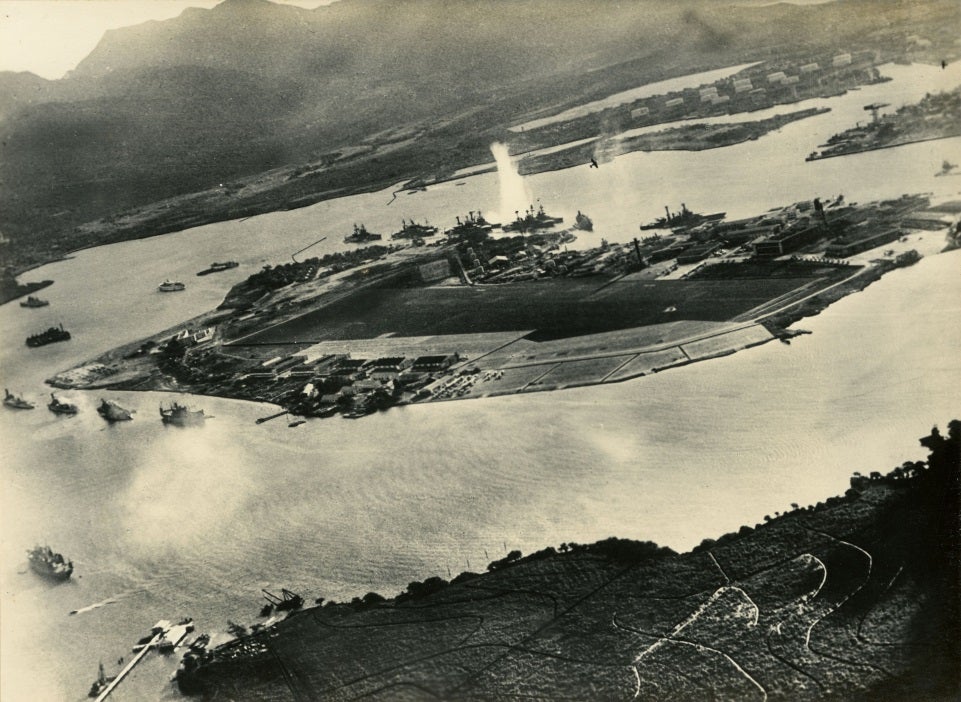 |
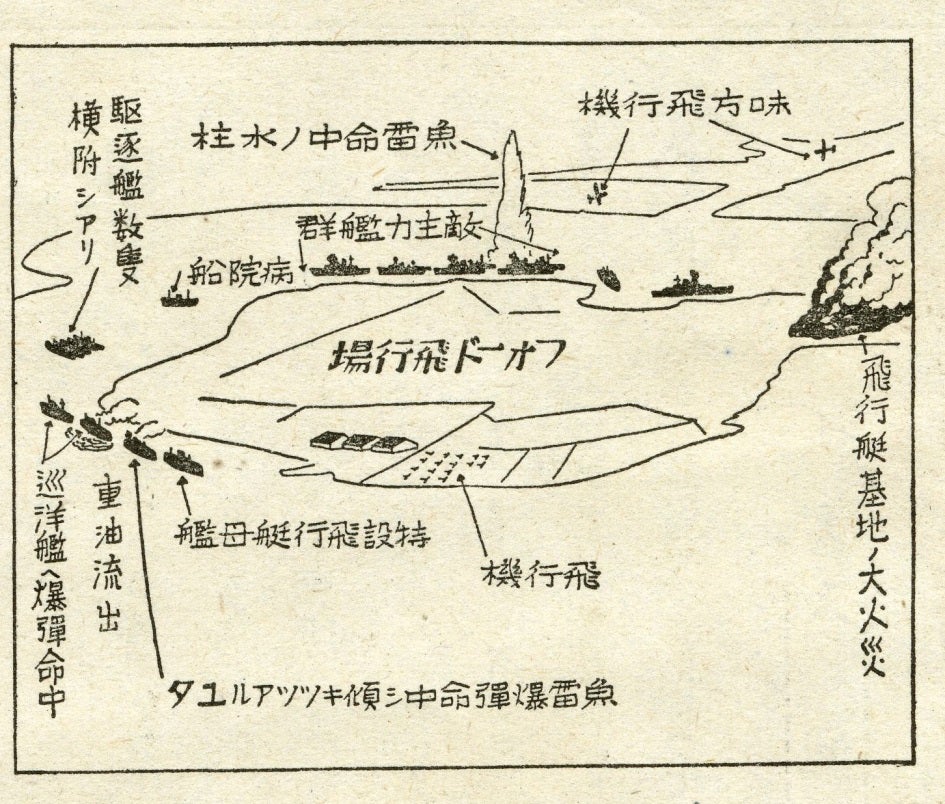 |
|
Aeriel View of Wheeler Army Airfield |
|
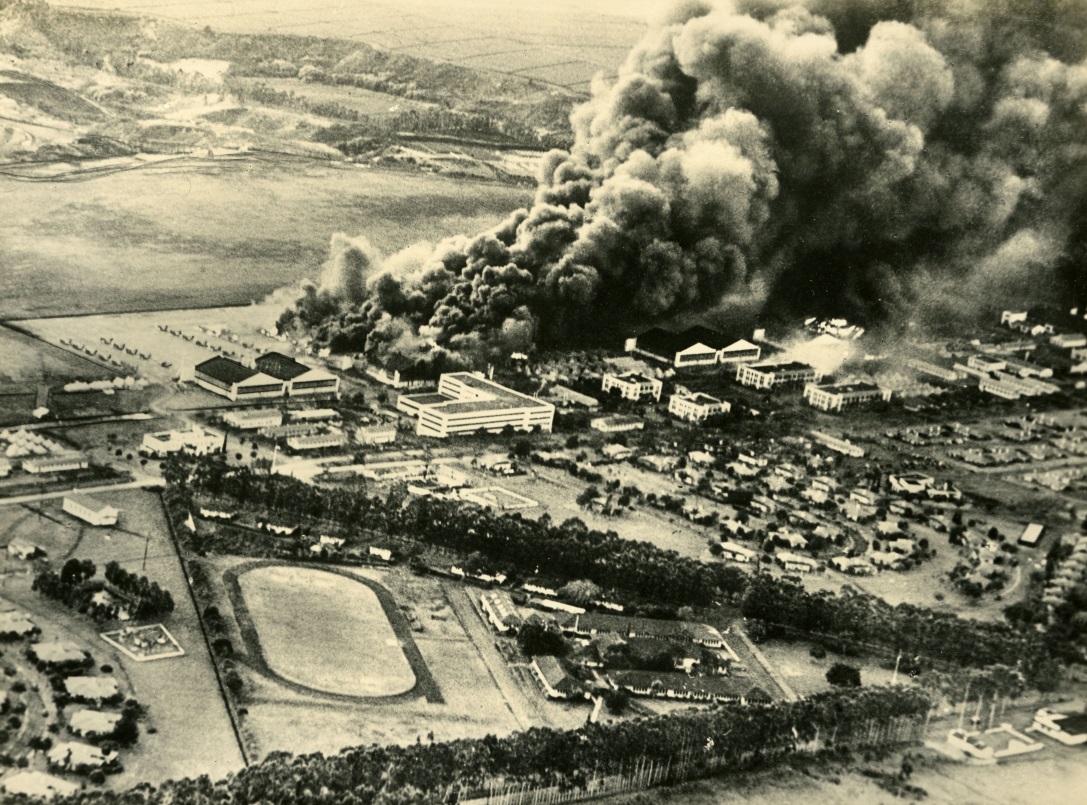 |
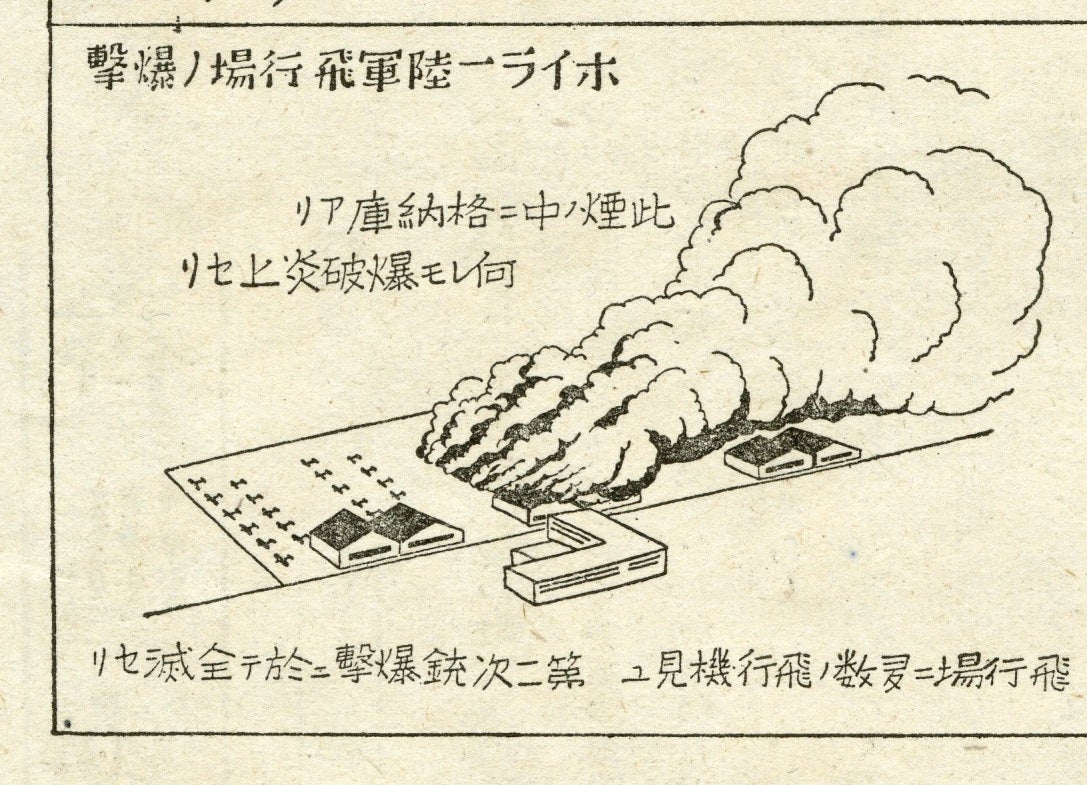 |
